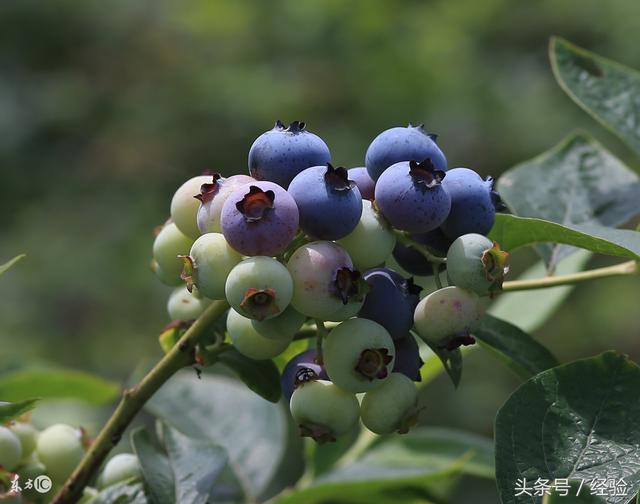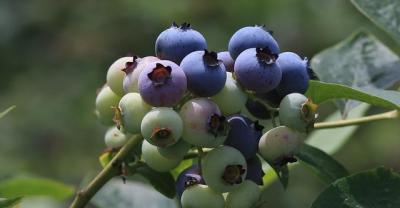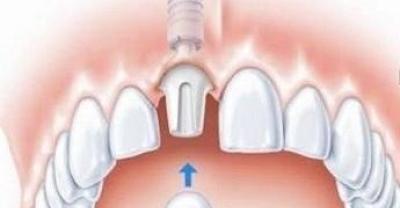Matters needing attention in planting potted blueberries
With the improvement of people's living standards, home greening and beautification has become everyone's fashion pursuit, potted blueberries will become the only choice for people's home greening and beautification. At present, the cutting and tissue culture technology of blueberry seedlings in China is gradually mature, and the price of blueberry seedlings is gradually low. for flower lovers, it is a good time to cultivate blueberry potted plants. Here are the technical points of potted blueberries:
First, select the right variety
The varieties with suitable chilling requirement (the cumulative value of effective duration of 0-7.2 ℃) and local climatic conditions were selected. Note: dwarf bushes are only suitable for open-air planting in the north (the specific scope remains to be confirmed); rabbit eye series, Shapland and O'Neill are not self-pollinating, and more than two pollination trees must be planted or configured to bear fruit.
Second, the purchase time of seedlings
Nursery stock can be planted all the year round. But it is best to buy before sprouting from autumn to the following spring, when the seedlings are easy to transport, management and planting are relatively simple, take off the seedling bowl and put it into the basin to cover the soil.
3. Soil requirements:
Blueberry, like acidic, soft, loose and breathable soil, rich in organic matter, requires a soil pH value of 4.5-5.5 and a soil organic matter content of 8% Mel 12%.
Soil configuration: family potted plants can buy humus soil or seedling substrate commonly used in the flower market and mix garden soil at 1:2, and add sulfur powder (about 2 grams of 1L soil or depending on the situation) to adjust the soil acidity and alkalinity. Under certain conditions, mature moss or organic matter such as peat, wood chips and rotten pine bark can be added at the same time.
Note: mature organic matter can be mixed and applied or directly covered on the surface of basin soil; unmature plant organic matter can be applied around the root system but far away from the root system.
4. Planting containers:
It is recommended to use breathable tile pots, followed by plastic pots, try not to use pottery and porcelain pots. Because blueberries are fibrous roots, shallow roots, do not need to use a large basin, do not use a deep basin, small seedlings suggest to use an inner diameter of 15 cm basin, the general finished plant with 25-30 cm basin can, avoid small seedlings with a large basin.
5. Climatic conditions:
For both flowering and fruiting seedlings, the chilling requirement must be ensured to meet the requirements of varieties, that is, blueberry seedlings must go through a long enough period of low temperature dormancy and vernalization. The chilling capacity of each variety varies according to the variety, but if you only watch the flowers, you do not need to go through a long enough vernalization period.
6. Watering management:
Blueberry root distribution is shallow, more sensitive to water, should always keep the basin soil moist but not stagnant, there are differences in different growing seasons of blueberry. Vegetative growth stage in spring: maintain the most suitable water conditions for strong plants
Fruit development stage and before ripening: appropriately reduce water supply to prevent excessive vegetative growth and fruit competition for nutrients
After fruit harvest: restore appropriate water supply and promote vegetative growth and flower bud development.
Mid-Autumn Festival to late Autumn: reduce water supply to facilitate the timely entry of dormancy.
In order to maintain the acidity of the soil, it is recommended to pour sulfur powder with water every six months (about 2 grams of 1L soil or depending on the acidity and alkalinity of the soil). Note: it is best to use Rain Water for daily watering. If tap water is used, it must be placed for 3-5 days before use to remove chlorine from the water.
7. Fertilization management:
Blueberry is a low-fertilizer plant. Compared with other fruit trees, the content of nitrogen, phosphorus, potassium, calcium and magnesium in blueberry is very low. Because organic matter has been mixed into the soil at the time of planting, fertilization of blueberry mainly refers to topdressing. The suitable fertilizers for potted blueberries are phosphorus pentoxide, ammonium sulfate, potassium sulfate and so on. The amount of blueberry fertilizer should be cautious, depending on soil fertility and tree nutritional status, especially to prevent excess and avoid fertilizer damage. Fertilization should adhere to the principle of less but diligent. Note: blueberry is a plant that dislikes calcium and chlorine. Do not add high calcium fertilizer such as bone powder and eggshell to the soil. Do not use chlorine fertilizer or nitrate nitrogen fertilizer.

- Prev

Causes of dental implant failure
Although artificial implants have become the most common form of missing tooth restoration.
- Next

Pot planting method of longan
Make a beautiful potted plant by eating leftover seeds. Longan is actually very easy to grow, so you might as well leave the core to try when eating longan. Longan needs to be put into the water before soaking.
Related
- Fuxing push coffee new agricultural production and marketing class: lack of small-scale processing plants
- Jujube rice field leisure farm deep ploughing Yilan for five years to create a space for organic food and play
- Nongyu Farm-A trial of organic papaya for brave women with advanced technology
- Four points for attention in the prevention and control of diseases and insect pests of edible fungi
- How to add nutrient solution to Edible Fungi
- Is there any good way to control edible fungus mites?
- Open Inoculation Technology of Edible Fungi
- Is there any clever way to use fertilizer for edible fungus in winter?
- What agents are used to kill the pathogens of edible fungi in the mushroom shed?
- Rapid drying of Edible Fungi

